Pool Swimming

An automatic swimming pool cleaner is absolutely the best piece of swimming pool equipment a pool owner can invest in. Manually cleaning a swimming pool is very time consuming and few pool owners enjoy this tedious task. An automatic swimming pool cleaner allows you to spend less time maintaining your swimming pool, and more time relaxing and enjoying your pool! There is a wide selection of automatic pool cleaners available for any budget, and every size In-Ground or Above-Ground swimming pool. There are three different types of automatic pool cleaners for In Ground pools and Above Ground pools, and they are classified by the way they collect debris and move around the pool. "Suction Side" automatic pool cleaners are connected to your pool skimmer and "Pressure Side" automatic pool cleaners connect to a return line fitting of your pool. "Robotic" pool cleaners work independently from your pool filtration system, and are powered by electricity.

Suction Side automatic pool cleaners use the suction power created by your filtration system to propel a pool cleaner around your swimming pool, and pick up debris from the pool floor. Suction side automatic pool cleaners are connected to the skimmer of the pool, and dirt and debris collected from the pool is deposited directly into your filtration system. Suction side automatic pool cleaners are very easy to connect to your swimming pool and to use. These pool cleaners may have an advantage over pressure side pool cleaners, because very little or no adjustments or additional parts are typically needed to adapt a suction side pool cleaner to your swimming pool. Examples of popular suction side automatic pool cleaners are the Hayward Pool Vac or Kreepy Krauly.

Pressure Side automatic pool cleaners connect to the return line fitting in the wall of your swimming pool. Pressure side automatic pool cleaners use a powerful jet of water to move around your swimming pool, and a jet of water is used to draw debris up from the pool surface into a special filter bag connected to the pool cleaner. Pressure side pool cleaners may have an advantage over suction side cleaners because they are typically more powerful and can climb the walls of an inground swimming pool. Because pressure side automatic pool cleaners are connected to the return line fitting of the swimming pool, the pool skimmer is left open to draw dirty water and debris from the surface of the pool. These pool cleaners act as a roving return line, and help eliminate "dead spots" in the swimming pool which are not reached by the circulating action of the main filter system. These pool cleaners deposit debris into a special filter bag instead of inside your pool filter system. Some pressure side pool cleaners feature their own "booster pump", which works independently from your main pool filter system to create the extra water pressure needed for these powerful cleaners. Examples of popular pressure side automatic pool cleaners are most Polaris and most Letro brand pool cleaners.

Robotic automatic pool cleaners feature a built in filtration system, and operate independently from your main pool filter system. No cumbersome hoses or tedious adjustments are required. These self-contained automatic pool cleaners use on board electric motors to move around your pool and create the suction necessary to pick up debris from the pool surface. As these robotic pool cleaners move about cleaning the pool surface, they constantly circulate and filter your swimming pool water. A robotic pool cleaner will pick up debris from the pool floor, and can also climb the walls and steps of an inground swimming pool. These pool cleaners are designed to scrub the water line of the swimming pool, and regular use of a robotic swimming pool cleaner will eliminate the water line stain found on most outdoor pools.

Robotic pool cleaners save a great deal of money in operating costs, because these pool cleaners do not require your pool pump and filtration system to be running for the pool cleaner to work. This also means you do not have to clean your filtration system after each use, using more electricity and losing chemically treated water through the filter backwash cycle. Robotic pool cleaners are available in many sizes and models designed for average size above ground swimming pools, up to the largest commercial facilities and water parks. Many robotic pool cleaners feature a hand held remote control, giving the pool owner complete control over the movements of the pool cleaner. This allows very quick and easy spot cleaning. The most common robotic swimming pool cleaner on the market today is the Aquabot pool cleaner.
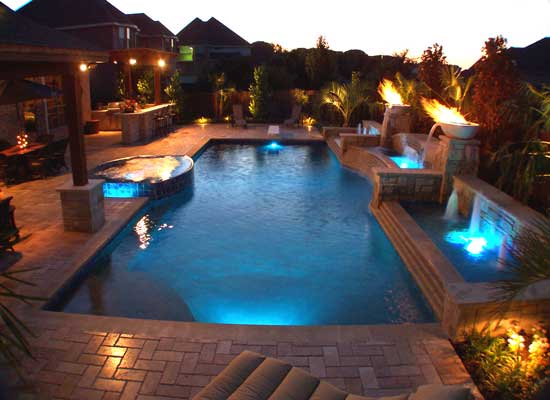
What does "Shocking" a swimming pool mean, and why is it necessary? Pool shock is a granular pool chemical, which should be added to your swimming pool at least once each week. You should shock more frequently if the pool is used heavily, after you receive large amounts of rain, or during extended periods of hot, sunny weather. The chlorine tablets or granular chlorine that you constantly dissolve into your pool water seeks out and combines with bacteria and other organics on a molecular level, to neutralize these harmful contaminants. In the process of killing these harmful contaminants the chlorine becomes inactive, and the chlorine and bacteria that have combined together is called "Combined Chlorine". The combined chlorine must be removed from the swimming pool to keep your pool water safe and clean. The combined chlorine is removed by "Shocking" the swimming pool. Super chlorinating or "Shocking" means drastically raising the chlorine level of the swimming pool for a short time, to a high enough level that the combined chlorine is oxidized and burnt off.

Which Shock should you use? There seems to be a very wide selection of swimming pool shock on the market, and each pool supply distributor works hard to make their product seem a step above the rest. When all of the products are compared side by the side, the only real difference on the labels is the concentration of the active ingredients in the product. The standard pool shock that most pool owners use has the active ingredient Calcium Hypochlorite. You should expect the label to read 65% Calcium Hypochlorite. Another more concentrated version of the pool shock may have as much as 75% Calcium Hypochlorite. Some manufacturers advertise a Calcium Hypochlorite based shock product, which allows you to swim in the pool shortly after adding it. Upon examining the label you will notice that the concentration of Calcium Hypochlorite is only around 47%. Although you can swim shortly after using this type of shock product, the lower concentration of Calcium Hypochlorite may not be enough to effectively destroy bacteria and harmful contaminants in your pool. Another chlorine based shock product that most pool supply distributors offer is commonly referred to as "Lithium Shock". Rather than the active ingredient Calcium Hypochlorite that is found in common Pool Shock, Lithium Shock contains Lithium Hypochlorite. Lithium shock uses lithium as a filler instead of the calcium, which allows this product to dissolve in water much quicker and does not affect the calcium hardness level of the swimming pool. Although Lithium Shock is superior to the common Calcium Hypochlorite based pool shock, this product is not used by most pool owners due to the higher cost. In addition to the chlorine based pool shock, you will find a product called Chlorine-Free Pool Shock. This revolutionary pool chemical performs the same task of oxidizing bacteria and organics in your swimming pool water, but it does not contain chlorine or chemicals that are harsh on swimmers eyes and skin. Chlorine-Free pool shock performs just as well as a chlorine based swimming pool shock by using the active ingredient Potassium Monopersulfate. Chlorine free pool shock uses a unique chemical process to destroy bacteria, instead of raising the chlorine level of water to dangerous levels. You can actually swim in the pool only one hour after using Chlorine-Free Shock. Chlorine based pool shock (Calcium Hypochlorite) has a high pH, and will naturally raise the pH level of your swimming pool water, in addition to changing your chlorine level. Chlorine free shock has a neutral pH, and will not affect any of your pool chemical levels. Chlorine-free shock is also superior to chlorine based pool shock for normal weekly shocking because of the inert ingredients and fillers that are used in the product. Each time chlorine based (Calcium-Hypochlorite) swimming pool Shock is added to your water, you are adding calcium to the pool. This may eventually raise the calcium hardness level of the water, causing cloudiness or scaling along the water line. Chlorine based swimming pool shock should always be kept on hand, because it is the ONLY pool chemical that will kill algae after algae has grown in the pool. If your water chemistry is properly maintained, and you shock your swimming pool at least once a week, you will never see algae or experience water problems of any kind!

Don't use Liquid Shock! Another type of shock that is widely available at any local pool store, hardware store and many grocery stores is liquid chlorine. This liquid chlorine is commonly used as shock, and used in place of chlorine tablets. Many pool owners believe this liquid chlorine is all they need to properly maintain a swimming pool, and unfortunately this is incorrect. Liquid chlorine is very inefficient and costly compared to properly maintaining a swimming pool using chlorine tablets and a weekly shock treatment. Liquid shock may seem easier to use than the granular shock for some pool owners because you simply walk up to the pool and dump the liquid in. The problem is that after you dump the hazardous liquid in your pool, you have to dispose of all the empty plastic bottles with the dangerous chemical residue inside. Granular pool shock is packaged in small, easy to use 1 lb. bags. If any children have access to the area where pool chemicals are stored it will be far easier to have an accident involving full or empty bottles of liquid chlorine, than an accident with bags of granular pool shock. Granular Pool Shock is rated at a minimum of 47% available chlorine and available in concentrations up to 75%. If you look at the label on a bottle of liquid chlorine it will say that it is ONLY 10% sodium Hypochlorite (chlorine)!! This means you are paying for 90% salt water with every bottle you buy. The dosage for a standard granular pool shock is 1 lb. per 10,000 gallons of pool water. If you are currently using a liquid shock, you should compare the cost of a dose of liquid shock to the cost of a dose of granular pool shock. You will find that granular pool shock can offer you a considerable savings.
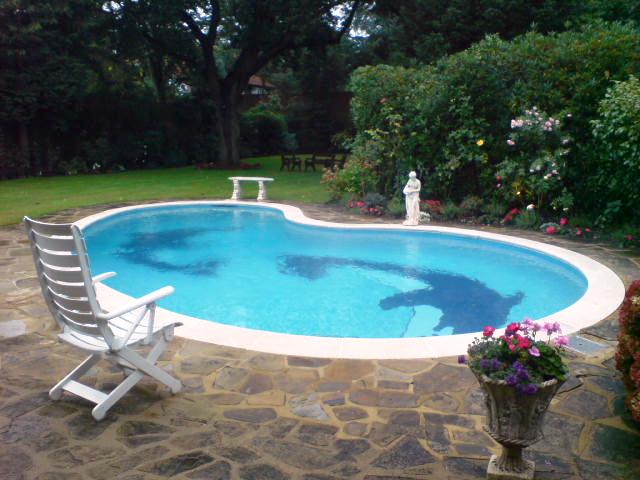
Instructions for "shocking" a swimming pool: Now that you know why you need to shock your pool and which pool shock product to use, the next question is how do you shock your pool. Before any pool shock is added to your swimming pool water the chemical must first be pre-dissolved in a bucket of water. All forms of pool shock are granular, and should dissolve relatively quickly. The first step is to fill a 5-gallon bucket with water from the pool and slowly pour the granular pool shock into the bucket of water (NEVER add water to a chemical, always add chemicals to water). Stir the bucket well and agitate the water for one minute or more to dissolve the pool shock. With the filtration system running, slowly pour the bucket of dissolved shock directly in front of the return line fitting. You will see the dissolved shock water being carried out into the pool by the jet of water coming from the return line. Pour slow enough that all of the water pouring from the bucket is carried out into the pool, and does not settle to the pool floor. When you near the bottom of the bucket (down to about 1/4 left in the bucket) you should fill the bucket back up with pool water and stir it again for one minute or more. There will be shock granules at the bottom of the bucket, which did not dissolve the first time. If you have a vinyl liner in your swimming pool you cannot allow un-dissolved pool shock to settle to the floor, because this may bleach or stain your pool liner.

Pool pH & Pool Alkalinity The pH and Alkalinity levels of swimming pool water affect many areas of the swimming pool and must be kept at the correct levels if you expect to successfully maintain your swimming pool. The Alkalinity of pool water acts as a buffer for the pH, and helps prevent the pool pH level from fluctuating. The Alkalinity should be maintained at 80 - 120 ppm. The pH is the measure of the acidity of the swimming pool water, and the pH level should be maintained at 7.2 - 7.6 ppm. The pH of pool water is somewhat sensitive, but easily controlled if the Alkalinity is kept in range. All basic pool test kits should read the pH and Alkalinity level of pool water, and these levels are easily adjusted with common water balancing pool chemicals. If the pool pH level is not kept in range pool water may irritate the skin and eyes of swimmers, corrode the pool surface and inside of the pool equipment and make it very hard to maintain the chlorine level of the swimming pool.

Pool Chlorine Stabilizer The chemical name of pool "Stabilizer" is Cyanuric Acid and it is referred to by either title. The Stabilizer level of swimming pool water must be maintained at 30-50 ppm. The Stabilizer level is important, but is typically only tested at the beginning of the swimming season when a pool is opened. The Stabilizer in swimming pool water partially surrounds the chlorine on a molecular level, to protect the chlorine and prevent the chlorine from being quickly burned off and used up by the sun. The symptoms of having too much Stabilizer or too little stabilizer in your pool water are very similar, and if you experience problems maintaining a chlorine level when all other chemical levels are properly balanced the stabilizer level should be tested. If the Stabilizer level tests lower than 30 ppm it will be difficult to maintain a chlorine level, because any chlorine added to your swimming pool will quickly evaporate and burn off in direct sunlight. If the Stabilizer level tests above 50 ppm it will also be difficult to maintain a chlorine level. Rather than partially surrounding the chlorine in your pool water to protect the chlorine, too much stabilizer will completely surround the chlorine making it inactive. In this state the chlorine is unable to combine with bacteria and harmful contaminants to sanitize your swimming pool. Stabilizer can be added to a swimming pool if necessary to raise the level, however once Stabilizer is present in pool water it cannot be easily removed. To reduce the amount of Stabilizer in a swimming pool the water must be diluted by partially draining the pool and re-filling with fresh water. 25% of the pool water should be drained and replaced with fresh water. The pool should be circulated for 12-24 hours, and the Stabilizer level should be tested again. This process should be repeated until the Stabilizer level is within range. The chlorine tablets and granular chlorine used to sanitize a swimming pool on a daily basis is a pre-stabilized form of chlorine. This means that the chlorine contains a small amount of stabilizer, and as chlorine is added to the pool a very small amount of Stabilizer is also added to help maintain the level. This small amount of Stabilizer constantly added with pool chlorine does not cause a problem in outdoor swimming pools because water is splashed out or evaporates, and gets replaced with fresh water to dilute the Stabilizer. This pre-stabilized form of chlorine cannot be used in indoor swimming pools, because much less water evaporation occurs and the stabilizer level will slowly buildup. Indoor swimming pool owners need to use an un-stabilized form of chlorine.

Calcium Hardness The calcium hardness of swimming pool water refers to the amount of the mineral calcium present in the pool water. The calcium hardness should be maintained at 80-150 ppm in a pool with a vinyl liner, or 150-200 ppm in a concrete or plaster finish pool. Low levels of calcium hardness can lead to corrosive water conditions, which may damage the pool surface, pool equipment and pool plumbing. If the water in a plaster or masonry finish pool becomes corrosive, the water will absorb calcium from the pool walls and floor by eating away at the pool surface until the hardness level nears 150 ppm. The calcium hardness level can be easily raised using a Calcium Hardness Increaser available from most pool supply dealers. High levels of calcium hardness may lead to cloudy pool water and "scaling". Scaling is most visible around the water line of a swimming pool as a white chalky deposit, but also forms inside pool equipment and pool plumbing. A pool Calcium Hardness Reducer chemical is available from most pool supply companies to lower the hardness to the desired range for your pool. You may also partially drain and refill a swimming pool with fresh water, which has a lower concentration of Calcium. Calcium is present in the water used to fill the pool and in the pool chemicals used to treat the water. The pool chemical that adds the most calcium to pool water is standard chlorine pool shock. If you find that your calcium hardness level is too high, read the label of the pool shock you've been using and you will likely find that the active ingredient is calcium hypochlorite. Each time this pool shock is added to the pool water, calcium is added to the water. To prevent this problem begin using Chlorine-Free Pool Shock on a regular basis, instead of standard chlorine pool shock (Calcium Hypochlorite). The active ingredient in chlorine-free pool shock is Potassium Monopersulfate, which does the same job of oxidizing bacteria and harmful organics but does not contain any calcium. If you choose to switch to chlorine-free shock you should always still keep the standard chlorine pool shock on hand, because it is the only pool chemical capable of killing algae.

Every year swimming pools are wasting billions of gallons of water that can be saved. This paper addresses the problems with the current use of full pool covers and how half covers are the solution to pool water conservation.

It is well known that pool covers can reduce water evaporation by up to 95%, yet less than 30% of pools are using covers. The current limitations imposed by full covers for the most part boils down to two problems.

First, full covers are difficult to stock. Full covers are bulky and must be stocked in 50 or more sizes requiring a sizable amount of floor space to have covers on hand for the myriad of pool sizes. If a size goes out of stock, the customer has to wait until the warehouse reorders another truckload of covers. This distribution and stocking problem severely limits the available stock on hand at any one time and prevents the customer from being able to purchase on demand.

Second, full covers for the most part fit only rectangular shaped pools. Covers initially come off the production line as sheets in rectangular shapes and are heat seamed together for various widths. They can be further cut into oval or round sizes, but nevertheless most of the pools built today are irregular free-form shapes and custom designs. In order to accommodate free-form pool shapes the customer many times must oversize the cover which means ordering an even larger than needed cover and cookie-cutting the cover to the free-form pool using the inside of the pool cove as a guide. This however can create a lot of waste. And how do you accommodate say an L-shape pool?

The twofold solution is that by using half covers, the number of cover sizes for distribution and stocking can be reduced from over 50 to just 4 half cover sizes (see below) which can be mixed-n-matched to work with almost all pools up to L-shapes solving both of the aforementioned issues.

Encouraging the industry to distribute half covers allows more people that ever to cover their pools. This practical way of using half covers revolutionizes the way covers are stocked and distributed, never incurring oversize shipping charges, and allows dealers to have covers in stock so pool owners never go home empty handed. By solving the problems preventing all pools to use covers, in the wake of water shortages that are only getting worse, it becomes a mandate to encourage all pools to be covered.

Another overwhelming limitation to full cover usage is that historically the only device sold for handling these covers has been the deck reel, an expensive bulky towel rack like device that sits at the end of the pool consuming valuable deck space. The problem with deck reels is that even if you cookie-cut your over-sized cover to fit your free-form pool, deck reels do not handle curvy free-form pool covers very well. Also if you have limited or no deck space where are you going to put your reel?

That said, as things stand today, only pools that can accommodate a deck reel have a solution for taking the covers on and off the pool, which is much like having invented breakthrough inflatable rubber tires for the auto industry, but no jack to remove them with on 70% of the cars.

For all those millions of pools without a jack, there is an innovative half cover rolling solution that can assist in the removal and handling of covers for pools that can't use a deck reel. Because most custom free-form pools cannot use a traditional deck reel, many of those pool owners are already splitting their bulky pool covers to make them easier to remove by hand, and are doing so at the advice of pool shops who want to sell them a cover, but cannot sell them a reel. The half cover rolling device just takes this a step further, and makes it possible for custom free-form pool owners who want to purchase a cover to have a means to handle the cover too.

As mentioned above to be expounded on here, distribution of full pool covers today is a nightmare for distributors because full cover distribution requires a multitude of covers sizes to support the many different size pools out there. Enabling custom shaped pools to use half pool covers, the plan is to revolutionize the way covers are distributed, lowering the cost for everyone and making stock on hand a top priority to solve the problem with special ordering or waiting for a cover to come in stock

Four Sizes: Employing the revolutionary strategy to provide half pool covers will solve this problem to support the majority of pools under 20x40ft. By shifting to the four size distribution model, half cover sizes (14x14, 16x16, 18x18, 20x20) can be mixed and matched to each half of the pool. Furthermore, online internet retailers can ship the lighter more compact half cover sizes, avoiding dreaded overcharges due to weight, making shipping costs more predicable and controllable. For handling the covers, stores can provide the lightweight compact half cover roller device that currently ships coast-to-coast at a fraction of the cost of the heavier/bulkier deck reels which require two boxes. For anyone doing business over the internet, shipping lighter and more compact half covers alone is a remarkable dollar saving breakthrough.

Out of the Warehouse and Into the Stores: For retail stores, by reducing pool cover stock sizes from the multitude of covers sizes (that must be special ordered from the warehouse and delivered next day or longer if on back order) to just four sizes, covers can easily be stocked right at the store. With the new half cover distribution model, retailers can now have "stock on hand" for immediate purchase. Having stock on hand will substantially increase cover sales helping people more than ever not only have a warm pool, but most importantly conserve water and chemicals to help our environment.
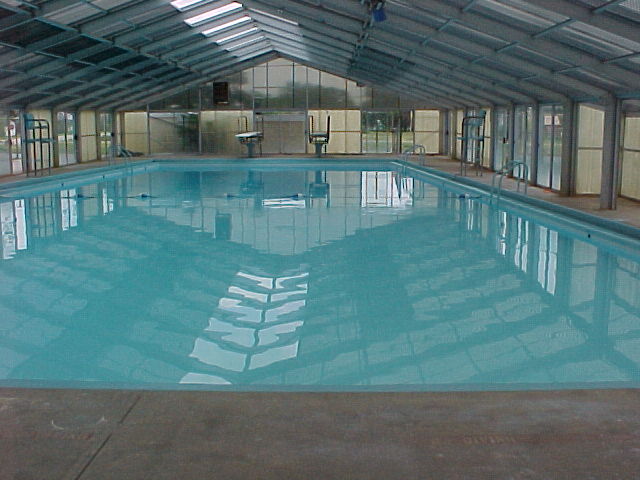
Water agencies realizing the great value of pool covers to save water are beginning to offer rebates toward the purchase of a pool cover. For instance, Southern Nevada Water Authority (SNWA) offers a $50 rebate for pool covers. On the international stage the hard hit drought stricken Australia offers pool owners a $200 rebate toward a cover and roller system.

Getting the Word Out: In light of the pressing need for pool covers, the greatest need is to inform everyone that the concept of using "whole pool covers" to cover the entire pool severely limits the distribution of covers, and also requires the consumer to purchase an expensive and awkward deck reel, or remove the cover by hand; emphasizing too that this solution only works on less than 30% of pools substantially limiting "use" of covers. Conversely, using the Split-Cover System, almost all pools can now use a cover, and is more cost effective for everyone resulting in higher sustainable sales for the industry overall.

A few years ago an alternative product called Sun Rings came into the market and many retail and online stores are carrying them, but a typical pool needs 10-15 rings at over $30/ea, the rings can bunch up at the end of the pool on windy days, are slow to fish out of the pool one at a time, and according to some retailers have thus experienced a higher customer return rate. On the other hand, the half cover system has a high customer satisfaction rate. It's easy to see then that whole covers are too big, Sun Rings are too small, and half covers are just right.

Current water shortages in parts of the nation, especially as mentioned in western U.S. areas like Las Vegas, are requiring communities to be on year round water restrictions and may potentially drive the increased demand and expansion of the pool cover market. Programs such as Water Smart in the Las Vegas area, and Water Sense sponsored by the EPA are dedicated to conservation. Additional programs by agencies offer pool cover rebates at participating dealers.

To do it's part in the fight for water conservation nationwide, the half pool cover distribution model will greatly assist in supplying stores everywhere with just-in-time stock on hand. In this way over time we will be helping to save billions of gallons of wasted water nationwide, by facilitating the distribution of pool covers in a much needed and better way. It takes about only 200 pools using a cover to save an entire city tank of water because a pool left unchecked for a year can completely evaporate... and that's a lot of wasted water!

Sacramento: Using an average evaporation rate of 17,500 gallons/pool annually, it takes only 200 pools to waste an entire city tank of water. If Sacramento has over 50,000 pools, then Sacramento alone wastes 250 tanks of city water every year (or) 2,125,000,000 (that's BILLION) gallons of water every year! What's that make you think about when they start rationing water and your lawn's going brown, while your bill's going up?
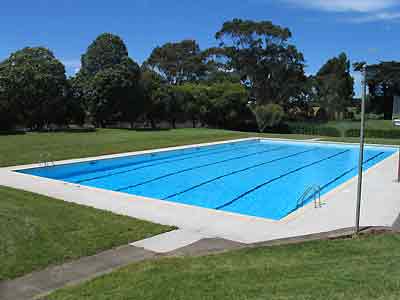
The 17,500 gallon/annual evaporation figure is probably conservative (other reports site 1.5"/week). In Australia one study by Sealed Air Corporation states over 86,000 liters per year, or over 22,700 gallons annually evaporates from the pool. In Las Vegas, the average is 100 inches per year, yet all evaporation rates vary depending on a number of conditions.

Nationwide: If the nation has around 8.5 million inground swimming pools, then nationally we waste 42,500 tanks of water every year. This amounts to 42,500(tanks) x 3,500,000(gals) = 148,750,000,000 gallons of water annually in the US alone. Again, that's BILLIONS!

Add an additional 30% for aboveground pools to approximate another 45 billion gallons of water evaporation, and we are looking at almost 200 billions gallons of water wasted annually in the U.S. alone. Aside from the water conservation issue, think about the cost of energy used to process and create that amount of drinking water.

The key to the innovative half cover solution is the Split-Cover System that rolls half the cover at a time, so almost all pools up to L-shapes are able use a pool cover. The patented system includes two individual free-floating rollers that are fastened directly to the underside of the buoyant half covers, each roller spanning the middle of each half cover. Custom locking fasteners are used that button the rollers to the covers and are removable if you wish to detach the covers in the off season. The lightweight free-floating adjustable length rollers span across the middles of each half cover (similar to how reels are placed across the middle of a round pool) but are directly fastened to the underside of the cover. The rollers are supported entirely by the buoyancy of the cover, so nothing attaches to the pool and is completely free-floating with the cover.

To operate the system, the customer just pops on a removable crank handle to one end of the roller tube to begin the rolling process. By turning the crank, the roller pulls both ends of the cover into the middle to wrap around itself right on the water, resulting in nice compact floating roll that, once the water drains from the end, weighs less than 30 lbs (about the weight of a 3 year old), so is compact and easy to handle. When not in use the device is completely hidden so is not an eye sore to your beautiful backyard pool setting that you paid so much for.

The innovative split cover remedy in short requires no deck space, accommodates almost any shape pool up to L-shape pools, is light/compact and completely hidden, and is easy enough to roll a cover in under thirty seconds. Switching to the easier to distribute half pool covers endeavors to help the millions of custom pool owners by providing them a practical solution and a choice they never had before, and moreover, to help us all do a better job at conserving precious water.

In summary, the half cover distribution model will be doing it's part to conserve water and support the cause of many water starved communities (such as Las Vegas, Australia, and others) that are water rationing and promoting pool covers through rebates so consumers will do the right thing and cover their pools. Efforts to change the way pools are covered will revolutionize the distribution and stocking of pool covers, leading the industry to change it's distribution model which will dramatically conserve precious water. In the half cover distribution world, retailers and wholesalers will never be out of stock utilizing the revolutionary "just in time" stock on hand distribution model. Retail stores will more than ever have an incentive and the ability to stock covers at the store for immediate sale, rather than special order from the warehouse requiring customers to come back for pickup, and wholesalers will move more inventory out of the warehouse and into stores. The warehouse will benefit because they can enjoy the same profit margins, but move stock immediately out to retailers rather than waiting for truckload deliveries in their space constrained warehouses. And the customer will be able to get what they want, when they want it so that everybody wins in the never ending fight for water conservation.

Installing a new vinyl liner for your pool is fast and easy and takes very little technical skill. Installing the liner is actually quite easy in terms of a DIY project especially considering how much money you can save over the course of one weekend. Being a commercial vinyl pool liner installer is a more difficult process since you will need to be required to have knowledge outside of what it takes to install the liner itself, and are held accountable for each liner installation to be cosmetically perfect.

Installing three liners per week without any wrinkles or problems requires years of experience in the trade. Installing a single liner, in your own pool, for the expressed benefit of saving thousands of dollars is easy by comparison. The most likely problem that you can encounter when installing your own liner is to have wrinkles on the floor and slopes. Even if the liner is sized well you can still easily have wrinkles in your liner if you do not have the ability to diagnose the problem and adjust the liner accordingly. A professional installer uses experience to orient the liner for the best fit possible where you will just wing it based upon what you see at the time. In a worst case scenario you are not able to lose all the wrinkles and have to live with the results. The real benefit here is that as long as you are satisfied with the results, then the project was successful since wrinkles are cosmetic and do not compromise the pools ability to hold water.

Pool covers are becoming increasingly popular among commercial pool as well as home pool owners. This holds true for both indoor and outdoor swimming pools. Pool covers offer a lot of benefits for any pool owner, some of which even translates to tangible quantifiable values. Indeed, a pool cover is one must-have swimming pool product that any pool owner should possess.

There have been many reported drowning incidents of children and even pets due to unguarded swimming pools. Having a pool cover over your unattended swimming pool is highly effective to prevent accidents like these from happening. The pool cover is a veritable safety device. It acts as a horizontal fence on your swimming pool, sealing it off from accidental access by your young children, your pets, as well as uninvited visitors. Though there is still no substitute from proper supervision, a pool cover may somehow do this on your behalf when you are not around. Pool covers can save your life, and the life of the people you care about.

Aside from investing in safety, getting a pool cover for your pool,as a matter of fact, saves you money. How? A pool cover can save you up to 70% on operating costs by reducing your swimming pool's need for extra heating equipment, make-up water, water treatment chemicals, and cleaning and maintenance costs. In the long run, your pool cover will pay for itself.
.jpg)
According to studies, swimming pools not protected by a pool cover can lose as much as 30% of their heat each day and more than 10,000 liters of water, including chemicals used to treat the water, all because of the natural process of evaporation.
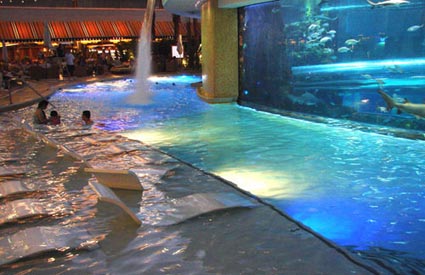
Evaporation, among many other factors, is mainly responsible for the heat loss in pool water. It takes a tremendous amount of energy to evaporate water, subsequently taking a lot of heat out of your pool water as well. With the use of a pool cover, heat loss is reduced by blocking evaporation and locking the heat in. Naturally, there will be a significant reduction in your swimming pool heating costs as your water thermostat may cut the heat supply from the boiler during the use of the pool cover. Also, locking more of the heat in with your pool cover somehow extends your swimming season. Your pool remains warm and inviting for a much longer period of time.

A pool cover over your swimming pool also significantly reduces the amount of energy required to ventilate the pool room for indoor pools. There will be little need for ventilation and exhaust fans, allowing you to save more on air-heating cost.

You are not only saved from large energy bills, by blocking evaporation, you also save on make-up water by as much as 50%, and chemicals for treating water by as much as 60%. Loss of volatile chemicals like chlorine due to evaporation is also greatly reduced. Studies show that around 5,000 gallons of water is conserved, as well as chemicals used to treat it annually if swimming pool owners will just use pool covers.
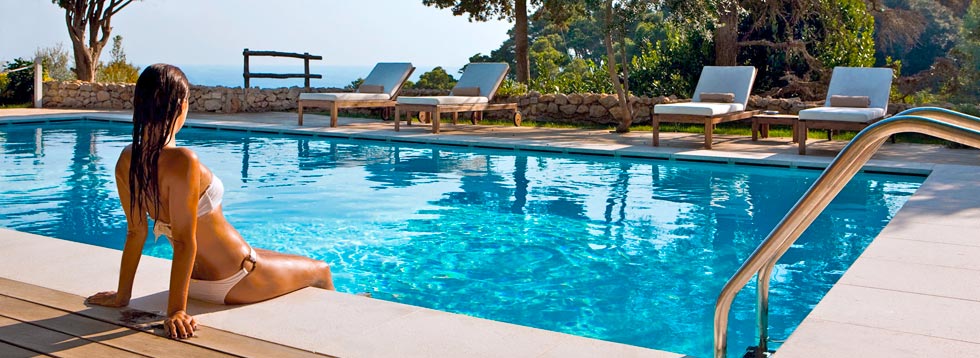
For indoor pools, fewer corrosive sanitation chemicals released into the air because of suppressed evaporation results to reduced moisture damage and acidic corrosion on your building structure. This also includes fixtures such as metal hinges, door and window frames, speakers, and others.
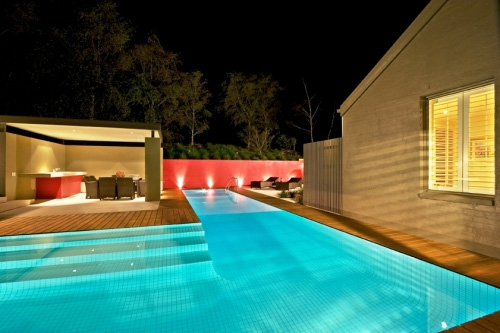
Pool covers also cut your cleaning time and reduce swimming pool equipment maintenance cost. Pool covers keep off leaves, debris and dirt out of your swimming pool water. Leaving your pool water crystal clear for the longest time. A pool cover can also protect swimming pools from harsh winter elements. With a pool cover over your swimming pool the heat of the pool water is kept well in and with the pool cover also keeping the dirt out, your pool equipment lasts longer because it actually works less.

Outdoor and indoor pool owners will benefit from a pool cover. Primarily, it can save lives as a safety device. And the monetary rewards and benefits are just an added bonus. Pool owners no longer need to fret on how to maximize their pool usage and keep it at its ace condition. The key is simply to use a pool cover that best suits your swimming pool and your swimming needs.

Owning your own pool is beyond the wildest dreams of most people. Many rumours exist about the cost of installing and running a swimming pool. In practice most people don't really have much idea about what's involved in setting up and running a swimming pool until they actually own one. In recent years, the introduction of a large range of PVC based above ground pools has brought the ownership of a swimming pool within reach of many more consumers.

These pools, generally referred to as above ground pools, are now offered in a range of sizes from several major global brands. Two of the most well known are Bestway and Intex. They have a selection of pools which range from the shallow 8ft diameter pool right up to deep pools over 20ft long. Shapes are slightly limited but are on the increase. Currently round, oval, square and rectangular pools are the norm. Most of these shapes can be found in both of the two most popular styles of above ground pool. These are the metal framed pools where the pool is situated in a metal frame. These pools can often be left up all year round and are the more robust type of pool. The other style has an inflatable ring around the top of the pool. This is inflated prior to filling. It acts as a float on the water and ensures that the top pf the pool stays above the water line. Both of the brands mentioned above also offer a hybrid of the two types of pool. Usually this hybrid can be found in the oval shaped pools. The larger pools are effectively as big as the in ground equivalents that many people would install if they could afford them.

Compared with installing a pool as a permanent feature buying and installing a flexible substrate pool can yield significant savings. Looked after, these pools will last for many years, although probably not as long as a permanent pool. Installation of these pools is usually a DIY job and requires little more than a level piece of land and the time to do it. Usually the assembly of the pool is quick and easy and within the space of a day you can go from empty garden to fully installed pool - although depending on your pool size and water supply it may take more than a day to fill the pool.

Once full the pool is usually ready to be used immediately. A mistake which is often made by many people is to use the pool in the same way as they have used children's paddling pools. These pools are designed to be swimming pools. As such they are not designed to be emptied and refilled on a regular basis. Many are supplied with pumps and filtration equipment. This is designed to be used with conventional pool chemicals to keep the water clean thus eliminating the need to continuously empty and refill the pool just as one wouldn't empty and refill an inground pool on a regular basis.

Treatment with chemicals normally follows the same sorts of routine that a permanently installed swimming pool would require. This can be time consuming and expensive but is essential to keep the water fit for bathing in. Without treatment pool water will become unsuitable for bathing in within a couple of days, often with algae appearing within 5-10 days. However, as with many products, as owning a swimming pool becomes more popular then technology on pool treatments moves on. For example several companies now offer method of treating swimming pools using salt as a sanitiser. Although the salt is cheap the units required to do this are not and the electric bill to run them can sometimes be significant. Others such as Chemipool in the UK are working with the chemical industry to formulate multifunctional liquids which are just added in the required dose once a week. This makes treating one of these pools both cheap, quick and easy.

Another area of development is in heating these pools. Again, as with their permanent counterparts, flexible above ground pools can often be heated with similar equipment to the traditional pools. Exactly what is required to heat the pool depends on the pool volume. If you require a heated pool it is worth spending the time and money to buy a heater which is sized for your pool. To small a heater will have almost no effect on heating you pool. Spending money on to small a heater is wasting your money. Some companies have developed solar panels to heat the water. The effect of these can be quite good for heating the water but they can be expensive to install. Some owners have made their own solar panels by placing a longer pipe on the return to the pool from the pump and weaving this backwards and forwards behind a plate of glass. Some very effective results have been informally reported.

Building an inground swimming pool is the culmination of 10 different phases of swimming pool construction. This article will give you a brief understanding of the construction cycle. And it all begins with, the desire to have a pool in your own backyard.
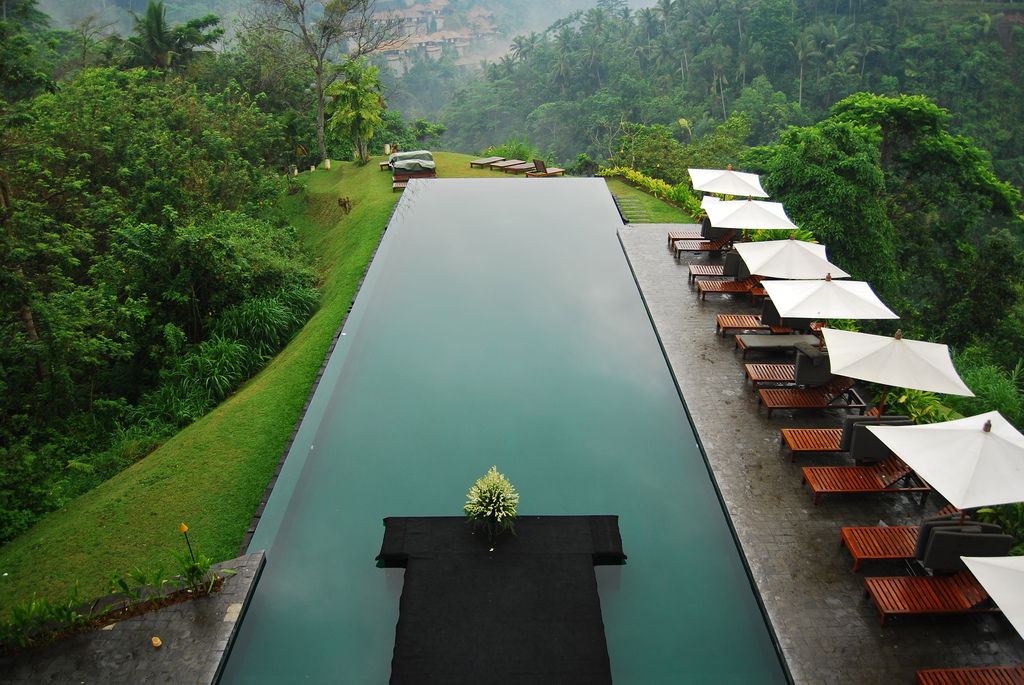
The first place most homeowners look for qualified swimming pool contractors is the local phone book, and by word of mouth from others who have built a pool. After the initial interview process, you will have a good idea what your swimming pool will cost to have built. The contractor or consultant will provide a design and a complete bid for your acceptance. With a contract in hand, the contractor will obtain all necessary engineering from a qualified structural engineer. The contractor will then submit for permits from the local jurisdiction. At this point, it might also be necessary for the contractor to apply for a Home Owners Association(HOA) approval depending on your local community requirements. Once the building permit is obtained, the construction kicks off in high gear.
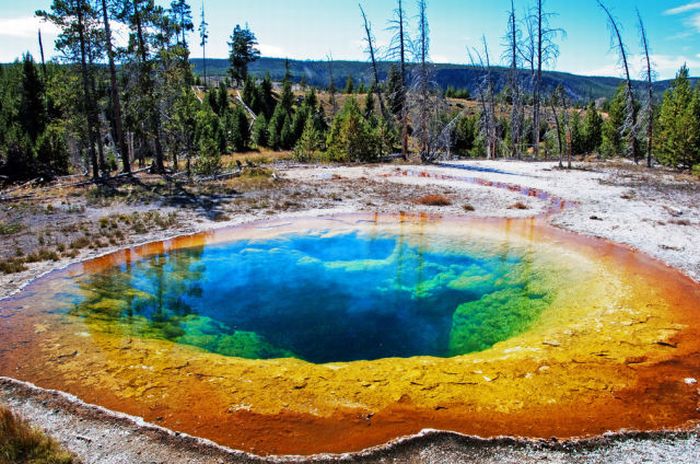
This is one of the most exciting phases of swimming pool construction, excavation. Excavation is the digging and forming of the swimming pool. The very first thing the excavation crews do is the pregrade. Pregrade is the clearing of the pool site and the grading of the area for the swimming pool. This allows the crew to paint on the ground the final shape of your pool and at the same time the crew will stake the perimeter of the pool and add forms for the structure of the pool. The typical time needed to dig a pool depends on various factors. These factors include: access, soil conditions, and overall size and depth of the pool. Most pools these days are dug in 1 to 2 days.

Once the pool is dug, it's time to move on to the rough plumbing and electrical. This is where all of the trenches will be dug for all the pipes and conduits necessary to operate your pool. Sometimes, the rough plumbing & electrical will be broken down in a couple of parts, otherwise all trenching and installation of the pipes and conduits will be done at the same time. This includes installation of the suction and return lines, water-feature lines, vacuum cleaner lines, fill lines, solar inlet and returns, gas lines for swimming pool heater and future barbecues and firepits, and the electrical service line. In most cases this will take 2-3 days to complete, and may be done either before, during or after steel.

The steel phase is the addition of rebar formed in the ultimate shape of the pool. A rebar contractor will "tie" the steel using bailing wire in a grid pattern determined by the structural engineer. A good crew will normally take less than a day to tie the steel depending on the size, shape and any raised walls or bond beams.

Up until this time, your backyard will look like one big disaster area, with trenches running here and there and a big hole in your yard with a criss-cross pattern of rebar running through. Gunite or Shotcrete is the application of the concrete to the pool surface, it makes the shell of your pool. The crews will arrive and via a hose will apply the concrete in the end, the pool will have a close to finish look. The benches installed, and the pool walls and floor will have been completed. This will also be one of the first times you will be required to be actively involved in the construction of your pool. For the next 7 to 10 days, you will be required to hose down the swimming pool shell two and three times a day with water to help cure the gunite or shotcrete. You will be truly amazed at how much water the pool structure adsorbs.

After the installation of the gunite or shotcrete, the waterline tile and any rock or boulders will be installed on your pool. The tile is necessary to provide an easy surface to keep clean at the waterline. Rock or boulders are added to incorporate a natural "swimming hole" look and feel and for waterfalls and jump rocks. For pools with the contemporary look or classic style, tile is incorporated into the design and is applied not only to the water line, but also to any raise walls or water-features.
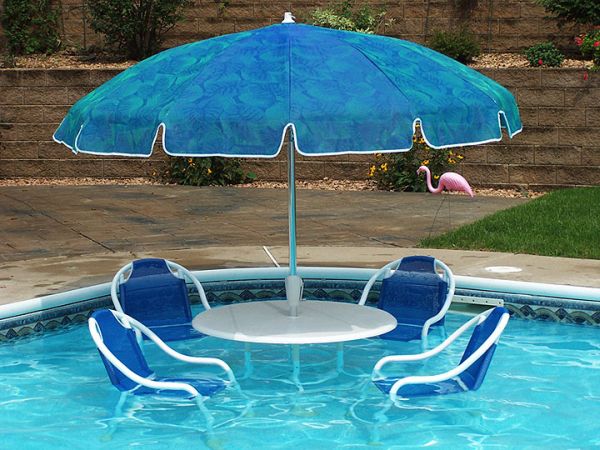
(Concrete, Pavers, Trex, Tile, Stone, etc.) With the tile installed, the next addition to your swimming pool project is the decking. Now where I grew up, decking was always associated with wood, and redwood was king. But when I got involved in the swimming pool industry, deck was the item that surrounded the pool. For the majority of swimming pool owners, the deck of choice is concrete. Concrete is durable and inexpensive when compared to the other options being, grass or landscaping, tile, stone, pavers and natural or synthetic wood products. The installation of decking takes a minimum of a couple of days for forming and finishing, or it can require multiple days and weeks depending on the surface. The deck crew will also be responsible for installing the equipment pad, where all the pumps, filters, heaters and other equipment necessary to operate your pool will be located.

The excitement builds, you're almost done and ready to swim. At equipment set, either your pool service company or the plumbing and electrical company will return to install all of the equipment. The lights will be installed, control panels will be hooked-up, all pumps, heater and filter will be mounted to the equipment pad and plumbed. This normally is routinely completed within one to two days. All ready for the filling of your pool with water. But wait, we're missing the all important pool surface.

Plaster provides the waterproofing surface for your pool. Plaster comes in many different forms from plain-old, to pebble and polished surfaces. Typically, this can be done in a day. And for those of you where money is no object, this can be an all tile pool surface complete with Grecian borders. After the swimming pool finish has been applied, now is the time to start filling your pool.

Once the bulk of the construction is complete, all excess and left over materials will be removed from the pool site. All empty boxes will be hauled to the dumps, and finally, your backyard will be ready to be enjoyed and not looking like a disaster zone. The last item left to do is to start up the pool. The start up process assures all equipment is operating and the swimming pool has all of the necessary chemicals to prevent algae and other problems. Now it's your turn to start reaping all of the benefits of swimming pool ownership.

This has been a brief article describing the inground swimming pool process for gunite or shotcrete pools. A swimming pool is the culmination of many individual persons, each an experienced veteran of his or her trade. For most homeowners, a licensed contractor can guide them through the process. For others, the option of building their own pool and acting as their own general contractor can save them thousands of dollars but requires a deeper level of understanding.










































.jpg)
























Thanks for such a nice content. Apppreciate it :)
ReplyDeleteCheers
If anyone interested similar one's have a look here https://besttoolsbrand.com thanks
Thanks for such a nice content. Apppreciate it :)
ReplyDeleteCheers
If anyone interested similar one's have a look here https://besttoolsbrand.com thank
Thanks for such a nice content. Apppreciate it :)
ReplyDeleteCheers
If anyone interested similar one's have a look here https://besttoolsbrand.com thank